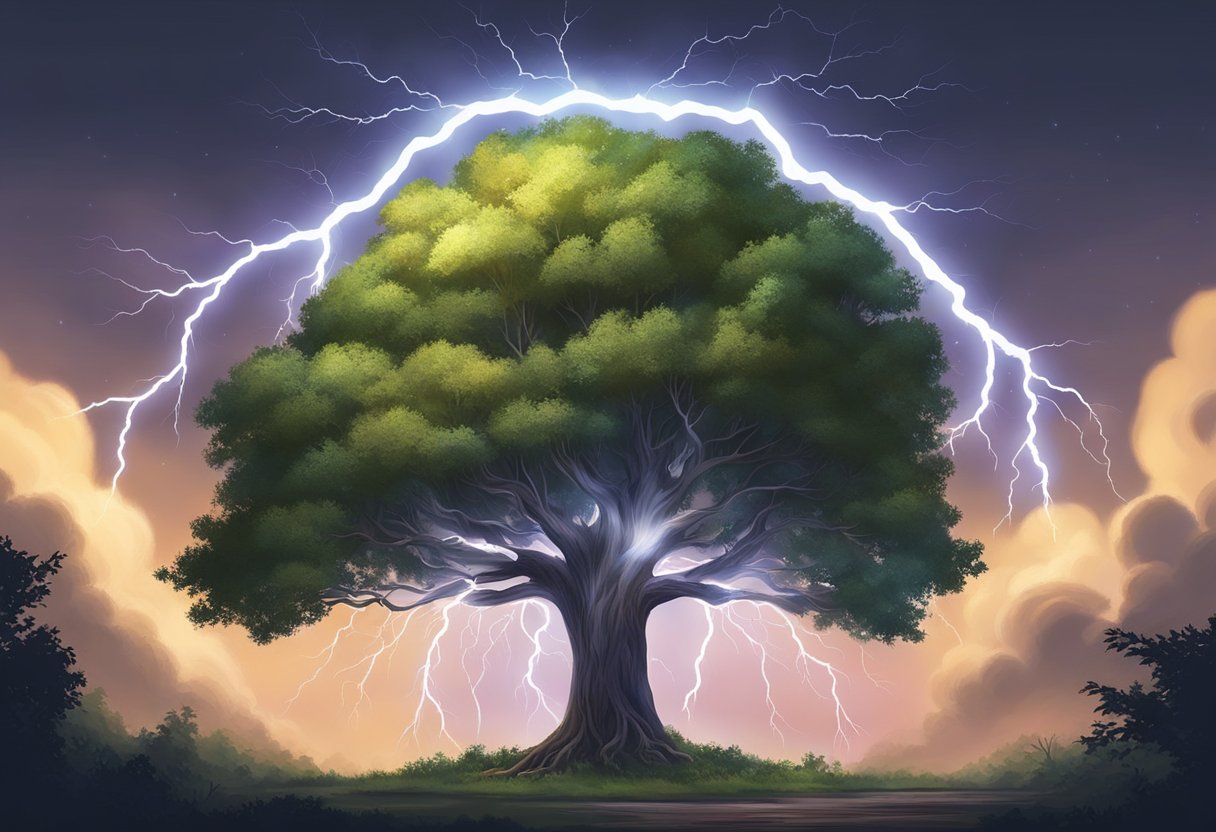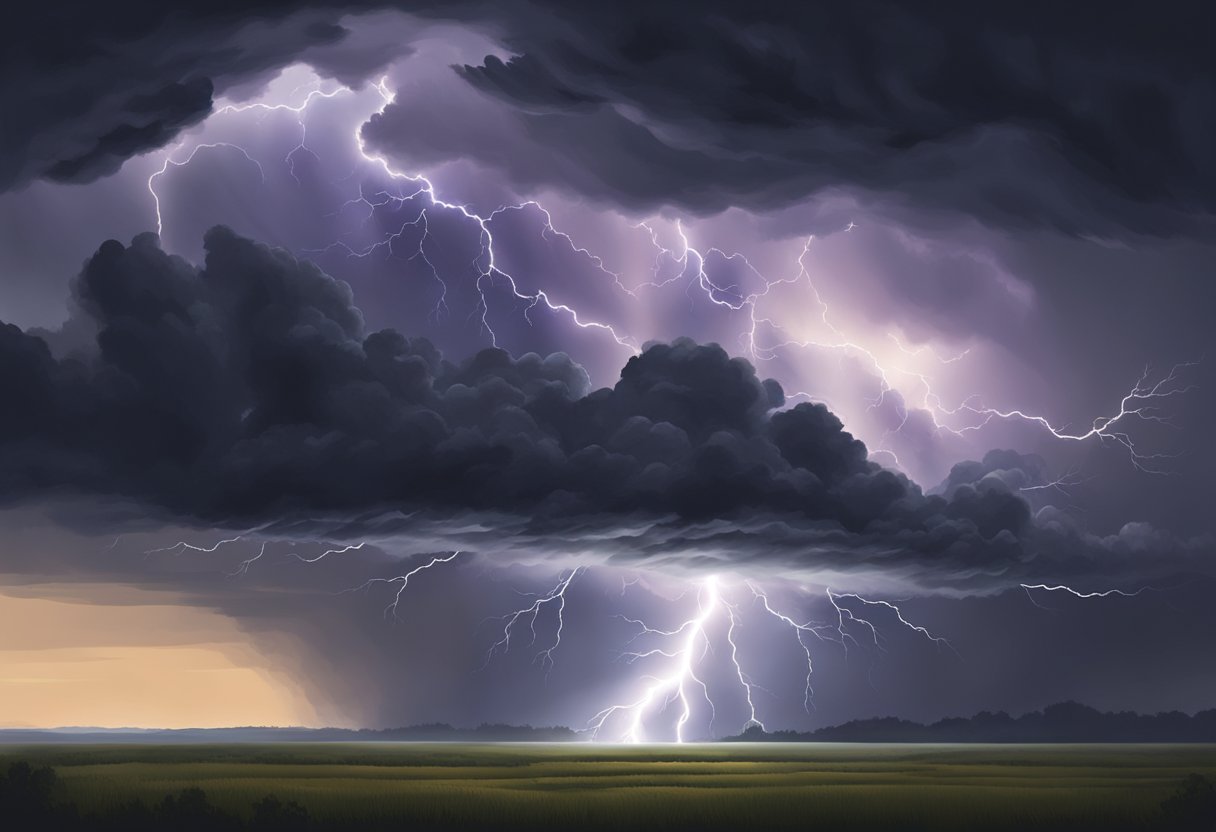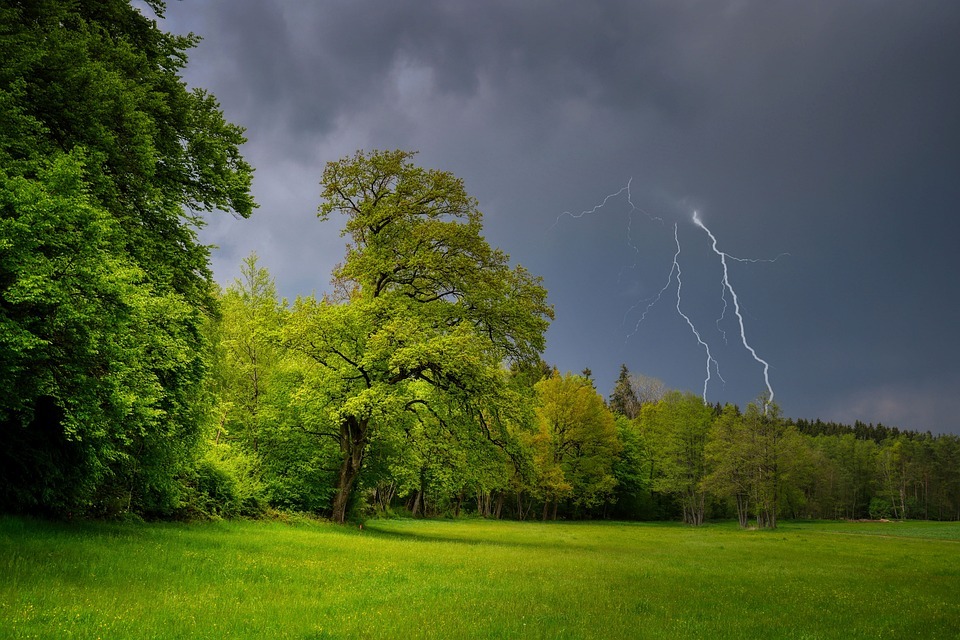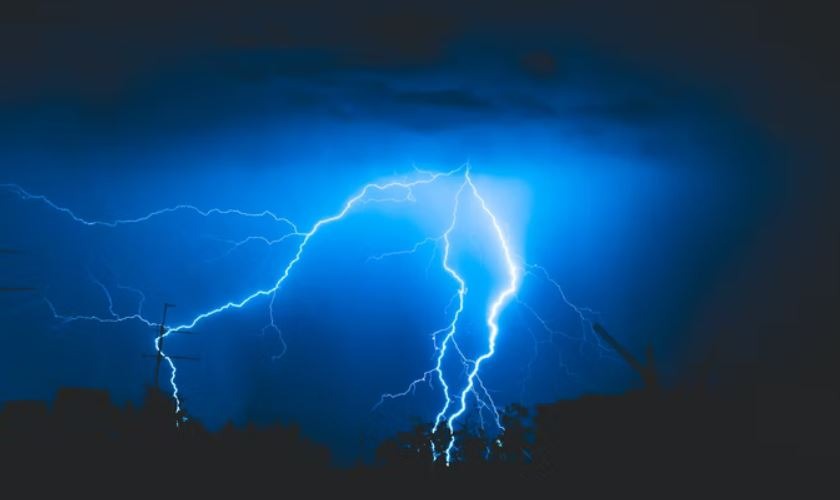The Effect of Light Pollution on Viewing the Northern Lights
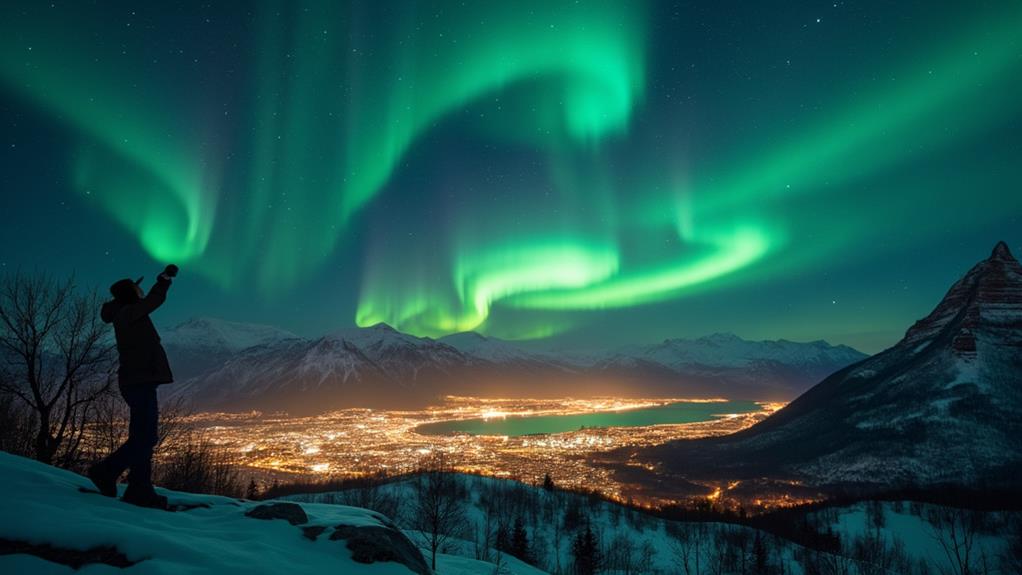
Light pollution significantly hinders the visibility of the Northern Lights. Urban areas, with their excessive artificial lighting, make the night skies up to 100 times brighter than rural locations. This artificial brightness not only impairs natural night vision but also diminishes the brilliance of the Aurora Borealis. To experience the Northern Lights fully, you need dark, clear skies, ideally during new moon phases. How does light pollution affect the visibility of these celestial displays, and what steps can you take to mitigate this issue?
Understanding Light Pollution
Light pollution, the excessive artificial light from urban areas, significantly alters natural night light levels and obscures the beauty of celestial phenomena like the Northern Lights. In cities, the night sky can be up to 100 times brighter than in unlit locations, making it difficult to see faint celestial events, including the mesmerizing auroras.
Artificial Light At Night (ALAN) refers to the adverse effects of misplaced and excessive nighttime lighting. It impairs natural night vision adaptation, making it nearly impossible to fully appreciate the night sky's wonders. The constant glow from streetlights, buildings, and other urban sources greatly diminishes the visible intensity and detail of the Northern Lights, rendering them weaker and less impressive.
Light pollution affects more than just stargazing; it disrupts wildlife behavior and ecological systems that rely on natural darkness. Animals that depend on the night for hunting, navigation, or reproduction can be severely impacted by constant artificial lighting. To truly experience the Northern Lights, one must seek out darker locations far from urban light pollution.
Aurora Borealis Basics
The Aurora Borealis forms when solar wind disturbs Earth's magnetic field, causing charged particles to collide with atmospheric gases at different altitudes, resulting in brilliant colors. For optimal viewing, visit high-latitude regions with dark, clear skies, away from urban light pollution.
Formation and Origin
The Aurora Borealis, widely known as the Northern Lights, results from the interaction between solar wind and Earth's magnetic field. When charged particles from the sun collide with molecules in Earth's atmosphere at speeds up to 2500 m/s, they generate the mesmerizing light displays visible in the night sky. Light pollution, however, can significantly diminish your ability to observe the Northern Lights, as the bright lights from urban areas can obscure the aurora's faint glow.
Auroras are typically seen in high-latitude regions, but extreme solar events, such as solar flares or coronal mass ejections, can extend their visibility to lower latitudes. The last significant increase in solar wind that enhanced aurora visibility occurred two decades before May 2024. Predicting the Northern Lights involves understanding the solar cycle and its impact on solar wind intensity. During periods of elevated solar activity, the likelihood of observing an aurora increases.
To experience the most vivid displays, seek out locations with minimal light pollution. Remote areas far from city lights offer the best opportunities to witness the full splendor of the Northern Lights.
Colors and Altitudes
Understanding the colors and altitudes of the Aurora Borealis adds another layer to appreciating this natural wonder. The stunning display you see in the sky is primarily determined by the type of gas involved in collisions with charged particles from the sun. At higher altitudes, above 200 kilometers (124 miles), oxygen produces rare red auroras. More commonly, at around 100 kilometers (62 miles), oxygen generates green hues, making it the most frequently observed color. Nitrogen, in contrast, can create blue and purple shades, typically seen at lower altitudes.
The altitude at which these auroras appear ranges from 80 to 300 kilometers (50 to 186 miles) above Earth's surface. This variation is crucial because it allows solar wind particles to interact with atmospheric gases, resulting in these vivid displays. More intense solar activity can enhance the brightness and vividness of these colors, making them even more spectacular.
However, light pollution can significantly diminish your experience. Artificial lights from cities and towns make it harder to see these stunning colors in their full glory. To truly appreciate the Aurora Borealis, you need a dark, clear sky far from urban light pollution.
Visibility Conditions
To fully experience the Aurora Borealis, ideal visibility conditions are essential. Dark skies, far from light pollution, are crucial. Northern lights are best viewed in high-latitude regions, such as near the Arctic Circle, where artificial light is minimal. These natural displays occur when charged particles from the solar wind collide with Earth's atmosphere, producing colors like green, red, blue, and purple, depending on altitude and atmospheric molecules.
For the best chances of seeing this phenomenon, seek remote locations during the dark hours of the night. Daylight significantly reduces aurora visibility, making nighttime optimal. The auroras' intensity also varies with solar activity; stronger solar winds result in more spectacular displays.
Avoid urban areas, as light pollution can obscure the auroras. In well-lit environments, the vibrant colors and dynamic movements of the northern lights can be almost entirely hidden. Therefore, escaping city lights is crucial for a breathtaking aurora experience.
Causes of Light Pollution
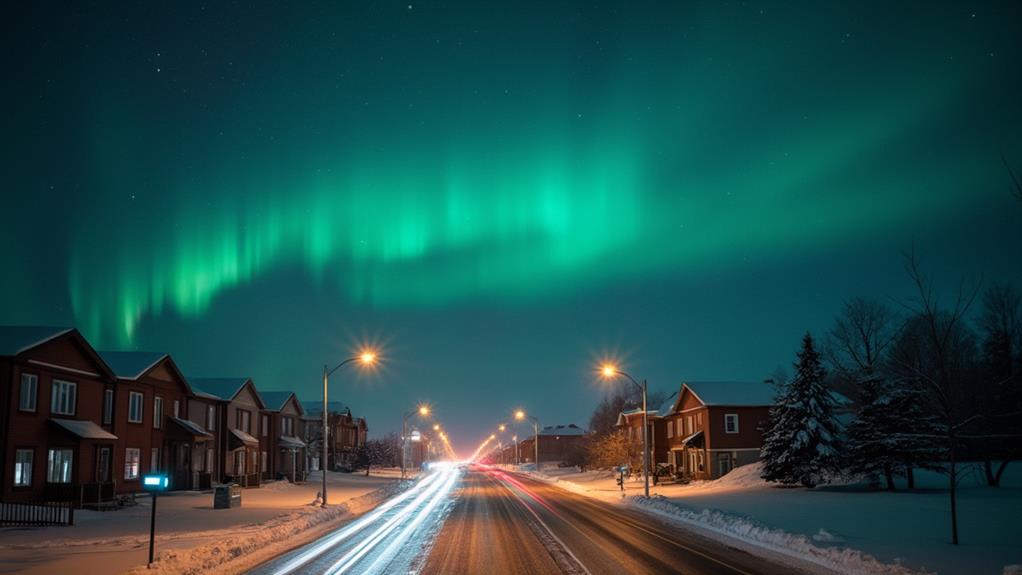
The primary sources of light pollution are urban light fixtures such as streetlights, building exteriors, and vehicle headlights. Poorly designed and excessive outdoor lighting disperses artificial light into the atmosphere, diminishing the visibility of natural phenomena like the Northern Lights. This misdirected illumination makes it challenging to appreciate auroras in urban environments.
Urban Light Sources
Urban light sources, including streetlights, buildings, and vehicles, significantly contribute to light pollution, which greatly diminishes the visibility of celestial phenomena like the Northern Lights. In urban settings, the intense illumination from these sources can make cities up to 100 times brighter than unlit areas. This excessive brightness obscures the delicate lights of auroras, rendering them nearly invisible to city residents.
The placement and intensity of outdoor lighting are crucial factors. In densely populated urban regions, poorly directed lights spill upwards, washing out the night sky. Brightly lit billboards and commercial lighting exacerbate the issue, detracting from the natural beauty of auroras and diminishing the overall viewing experience.
Here is how different urban light sources contribute to light pollution:
| Light Source | Impact on Light Pollution |
|---|---|
| Streetlights | High, due to extensive coverage |
| Buildings (interior) | Moderate, light escaping windows |
| Buildings (exterior) | High, from decorative lighting |
| Vehicles | Moderate, especially headlights |
Urban areas near the Arctic Circle, such as Fairbanks and Tromsø, are particularly affected by light pollution. Even during periods of strong solar activity, the visibility of the Northern Lights is compromised, making it challenging to witness this stunning natural display.
Streetlight Design Issues
Poorly designed streetlights significantly contribute to light pollution, obscuring the Northern Lights and other celestial phenomena. Excessive upward light from streetlights creates skyglow, diminishing the visibility of the Northern Lights. High-intensity lighting scatters in the atmosphere, forming a haze that further obscures the clarity of auroras.
In many urban areas, outdated streetlight technology lacks proper shielding, allowing light to spill into residential areas and increasing light pollution. This makes it harder to appreciate the night sky. The color temperature of streetlights is also crucial. Bright blue-white lights can overshadow the delicate hues of the Northern Lights, making them nearly impossible to see.
One solution is advocating for dark-sky-friendly streetlight designs. Full cutoff fixtures, for example, direct light downward and reduce unnecessary upward emissions. Implementing these improved streetlight designs can significantly reduce light pollution and enhance the visibility of the Northern Lights, allowing you to appreciate these natural wonders fully.
Excessive Outdoor Lighting
Artificial light at night (ALAN) from excessive outdoor lighting significantly contributes to light pollution, particularly in urban areas. Streetlights, billboards, and building facades all play a role in this issue by disrupting natural darkness and obscuring celestial phenomena like the Northern Lights. Urban environments can be up to 100 times brighter than unlit locations, which greatly diminishes the visibility of auroras.
Key points to consider regarding the impact of excessive outdoor lighting:
- Streetlights: Increased installations direct light upwards, contributing to unnecessary brightness.
- Billboards: Constantly illuminated advertisements add significantly to urban glow.
- Building Facades: Decorative lighting on buildings further amplifies light pollution.
- Unshielded Fixtures: These scatter light in all directions instead of focusing it downward.
These factors create an urban glow that can overpower the Northern Lights, making them nearly invisible in light-polluted areas. If you live in a city, you are likely missing out on the full experience of these natural wonders due to excessive outdoor lighting.
Measuring Light Pollution
Measuring light pollution is crucial for preserving our night skies and improving our ability to observe celestial events. Several tools and resources can help you assess light pollution effectively.
One accessible method is the Dark Sky Map, which visually represents pollution levels across various regions, aiding in identifying optimal stargazing spots. Similarly, the Pollution Map and the Loss of the Night tool provide valuable insights into areas affected by artificial light.
For a more hands-on approach, the Dark Sky Meter app allows users to measure sky brightness directly from their smartphones. This app is particularly beneficial for amateur astronomers and enthusiasts looking to evaluate local night sky quality.
Professional astronomers often rely on sky quality meters, specialized devices that provide precise measurements of darkness. These readings are essential for planning activities like stargazing and astrophotography. It's important to note that urban areas can be up to 100 times brighter than unlit locations, significantly impacting the visibility of phenomena such as the Northern Lights.
Impact on Night Sky
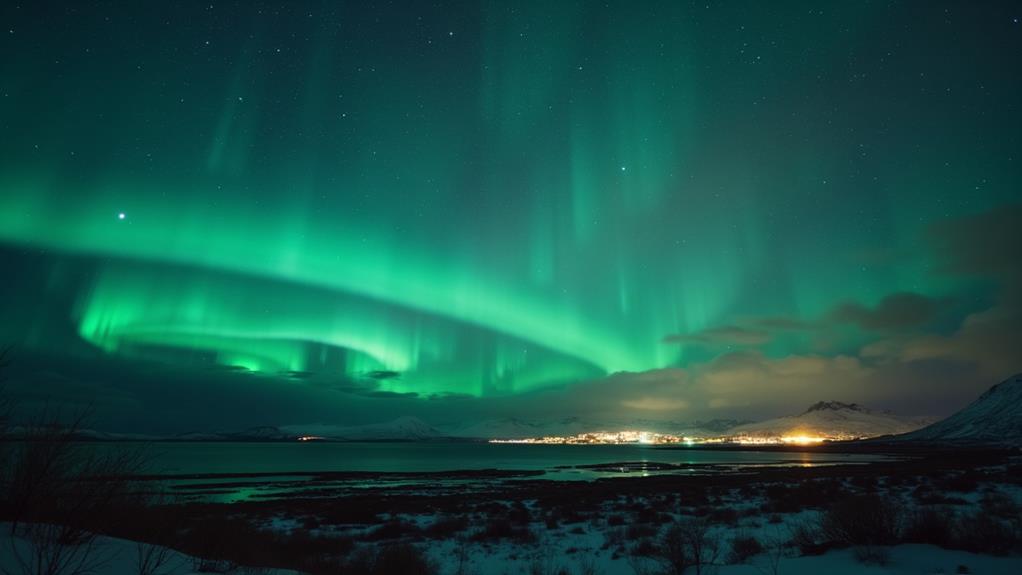
The impact of light pollution on the night sky is profound, significantly diminishing the visibility of celestial phenomena such as the Northern Lights. In urban areas, artificial brightness can be up to 100 times greater than in unlit regions. This overwhelming glow from city lights obscures the delicate colors and intricate patterns of the auroras, making them nearly impossible to see clearly. Observing auroras from a city often leads to disappointment.
Key Points:
- Diminished Radiance: Urban light pollution weakens the appearance of the Northern Lights, making them less vibrant.
- Obscured Phenomena: The glow from city lights hides celestial events like the auroras.
- Geographic Challenges: Even regions close to the Arctic Circle, such as Fairbanks and Tromsø, experience light pollution that hinders aurora visibility.
- Need for Seclusion: For optimal viewing and photography, it is essential to move away from urban centers to areas with minimal light pollution.
Light pollution not only robs the night sky of its beauty but also reduces public awareness and appreciation of these awe-inspiring natural events. To fully experience the Northern Lights, one must escape the city lights and seek out darker, more secluded locations.
Urban Vs. Rural Viewing
In urban areas, light pollution can make the Northern Lights nearly impossible to see, as streetlights and building illuminations drown out the delicate aurora hues. In contrast, rural locations with dark, clear skies offer a vivid and breathtaking view. For optimal aurora viewing, head to remote spots where minimal artificial light enhances the natural splendor of the auroras.
Urban Light Obstruction
In stark contrast to the serene darkness of rural areas, urban environments are saturated with artificial light that significantly hampers the visibility of the Northern Lights. City lights generate intense light pollution, making it nearly impossible to see the auroras clearly. Here are the main reasons why urban areas pose such a challenge:
- High Light Pollution Levels: Urban areas can exhibit light pollution up to 100 times brighter than rural locations. This overwhelming brightness drastically reduces the visibility of the Northern Lights.
- Aurora Scattering: The bright artificial lights from cities cause the auroras to scatter and appear significantly weaker. Against the urban glow, what would be a stunning display in a dark sky becomes nearly invisible.
- Affected Prime Locations: Even locations near the Arctic Circle, such as Fairbanks and Tromsø, suffer from light pollution. Despite being prime spots for viewing, city lights can hinder clear views of the auroras.
- Travel Recommendations: To improve your aurora viewing experience, it is highly recommended to travel to secluded, rural areas where light pollution is minimal and skies are darker.
Rural Viewing Advantages
While urban areas are bustling with activity, rural locations offer unparalleled advantages for viewing the Northern Lights. Light pollution in cities can wash out the delicate colors of the auroras, making them appear dimmer and less impressive. In contrast, rural areas experience significantly lower light pollution, allowing for clearer and more radiant views.
Venturing into remote regions with minimal human interference provides ideal conditions for witnessing the Northern Lights. These areas are often marked as green, blue, or grey on light pollution maps, indicating minimal artificial light interference. This reduction in light pollution results in improved aurora visibility, offering a breathtaking experience that's simply not possible in urban settings.
Traveling to rural locations not only increases your chances of seeing the Northern Lights but also immerses you in the natural beauty of the night sky. The absence of artificial light allows the stars to shine more brightly, creating a stunning backdrop for the auroras. Therefore, if you're eager to see the Northern Lights in all their glory, rural areas are your best bet for a truly unforgettable experience.
Enhancing Aurora Visibility
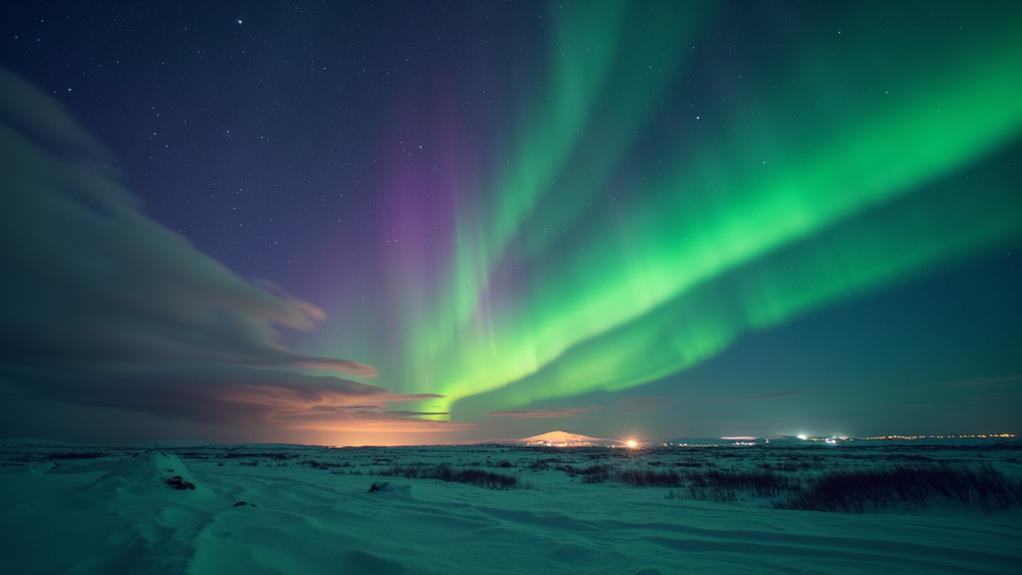
To enhance aurora visibility, choose locations far from urban light pollution, as city lights can wash out the delicate colors of the auroras. Ensure you find a spot with a clear sky, free from artificial lighting.
For optimal viewing, follow these steps:
- Use light pollution maps: Identify areas with low light pollution, typically marked as green, blue, or grey zones. These areas offer the darkest skies.
- Plan around the moon: The moon's brightness can interfere with aurora visibility. Check the lunar calendar and plan your trip during new moon phases or when the moon is below the horizon.
- Support community initiatives: Encourage and participate in local efforts to reduce artificial lighting in residential areas, which can significantly improve aurora viewing conditions.
- Advocate for outdoor lighting regulations: Engage in local advocacy to support regulations that preserve dark skies, enhancing the aurora experience for everyone.
Tools for Stargazers
Many tools can significantly enhance your stargazing experience by helping you locate the darkest skies. Dark Sky Maps are invaluable for identifying locations free from light pollution. These maps visually represent light pollution levels, guiding you away from urban light and toward optimal stargazing spots.
To assess the sky brightness of your immediate area, you can use Dark Sky Meters. These apps measure light pollution right where you are, helping you decide if you need to move to a darker location. Similarly, Light Pollution Maps (LPM) are excellent resources for pinpointing areas with minimal light interference, allowing you to plan your celestial observations more effectively.
Another helpful tool is the Loss of the Night app, which evaluates night sky quality. This app provides insights into visibility conditions for stars and auroras, ensuring you know what to expect before heading out. For those interested in astrophotography, sky quality meters are crucial. They measure darkness levels to ensure you capture celestial events under the best possible conditions.
Community Solutions
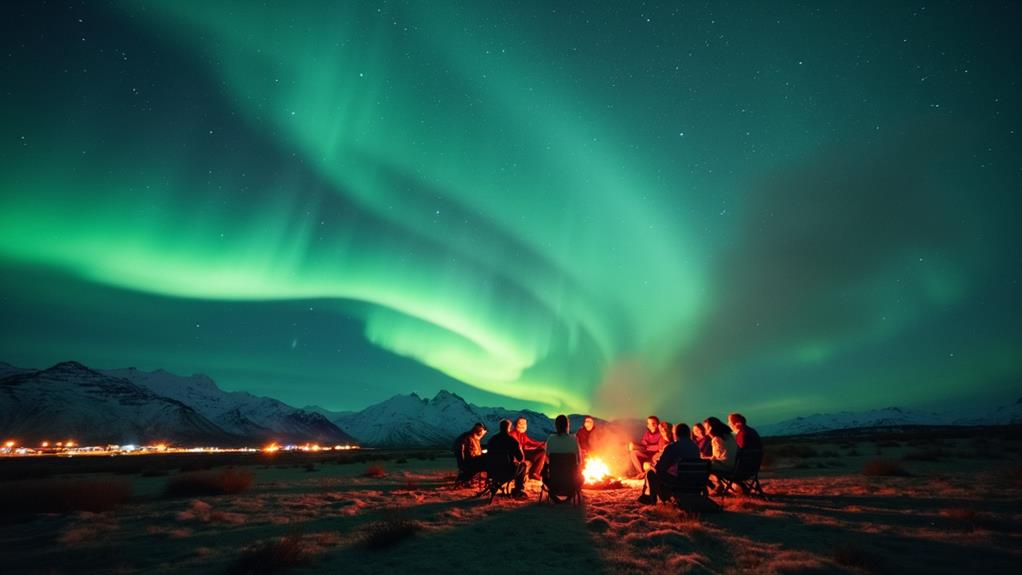
Addressing light pollution effectively requires active community engagement and collaborative efforts. You can play a crucial role in reducing light pollution and preserving dark skies for stunning aurora displays. Here are some actionable community solutions to get started:
- Raise Awareness: Organize community initiatives to educate people about the impact of light pollution on aurora visibility. Hosting workshops and distributing informational materials can encourage residents to minimize unnecessary nighttime lighting.
- Local Government Engagement: Work with local officials to implement regulations that minimize outdoor lighting emissions. These policies can significantly reduce light pollution, making the skies darker and auroras more vivid.
- Stargazing Events: Arrange local stargazing events to help the community experience the beauty of the night sky firsthand. These events can highlight the importance of dark skies and foster a collective commitment to reducing light pollution.
- Educational Programs: Introduce educational programs in schools and community centers to teach about the effects of light pollution on natural phenomena like the Northern Lights. By fostering a culture of appreciation and conservation for dark skies, you can build long-term community support.
Resources and References
Addressing light pollution is essential for enhancing the visibility of the Northern Lights. Utilizing resources like LightPollutionMap.info, which provides detailed data on light pollution levels, can help you find the best locations for viewing the aurora. This tool allows you to avoid areas with heavy artificial lighting, thereby increasing your chances of witnessing a spectacular auroral display.
Research, such as the studies by Falchi et al. (2019), highlights the detrimental impact of urban artificial lighting on the visibility of stars and auroras. Familiarizing yourself with this research can deepen your understanding of how light pollution hinders celestial observations.
The National Park Service's Night Skies program offers valuable resources for preserving dark skies, which are crucial for enhancing aurora visibility. Supporting their initiatives by promoting dark sky practices in your community can make a significant difference.
DarkSky International also advocates for reducing light pollution through community initiatives and regulations. Engaging with their programs can help create better conditions for celestial observation.
Educational materials from various organizations focus on raising awareness about the effects of light pollution on natural phenomena like the Northern Lights. These resources are vital for anyone interested in understanding and mitigating the adverse impacts of light pollution.

